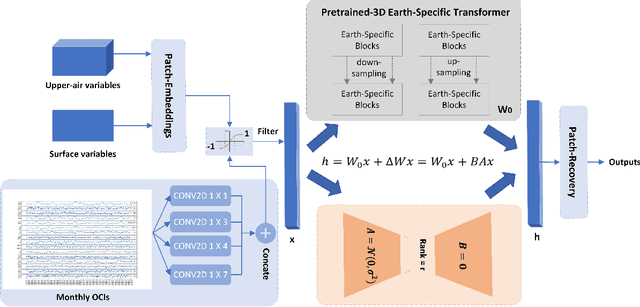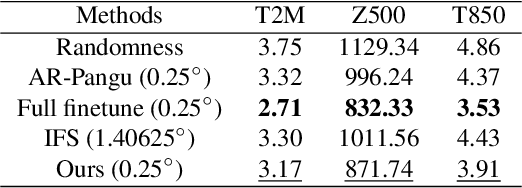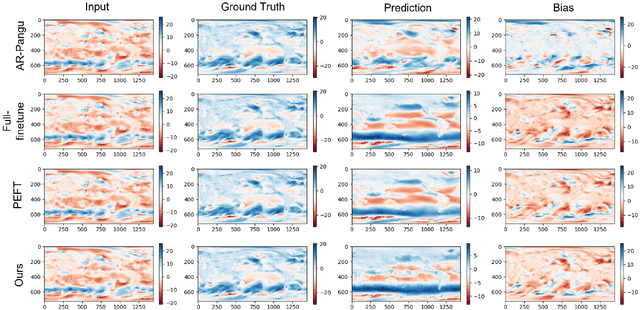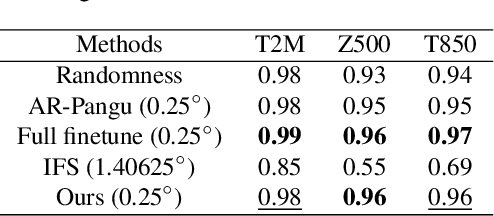Efficient Subseasonal Weather Forecast using Teleconnection-informed Transformers
Paper and Code
Feb 05, 2024



Subseasonal forecasting, which is pivotal for agriculture, water resource management, and early warning of disasters, faces challenges due to the chaotic nature of the atmosphere. Recent advances in machine learning (ML) have revolutionized weather forecasting by achieving competitive predictive skills to numerical models. However, training such foundation models requires thousands of GPU days, which causes substantial carbon emissions and limits their broader applicability. Moreover, ML models tend to fool the pixel-wise error scores by producing smoothed results which lack physical consistency and meteorological meaning. To deal with the aforementioned problems, we propose a teleconnection-informed transformer. Our architecture leverages the pretrained Pangu model to achieve good initial weights and integrates a teleconnection-informed temporal module to improve predictability in an extended temporal range. Remarkably, by adjusting 1.1% of the Pangu model's parameters, our method enhances predictability on four surface and five upper-level atmospheric variables at a two-week lead time. Furthermore, the teleconnection-filtered features improve the spatial granularity of outputs significantly, indicating their potential physical consistency. Our research underscores the importance of atmospheric and oceanic teleconnections in driving future weather conditions. Besides, it presents a resource-efficient pathway for researchers to leverage existing foundation models on versatile downstream tasks.
 Add to Chrome
Add to Chrome Add to Firefox
Add to Firefox Add to Edge
Add to Edge